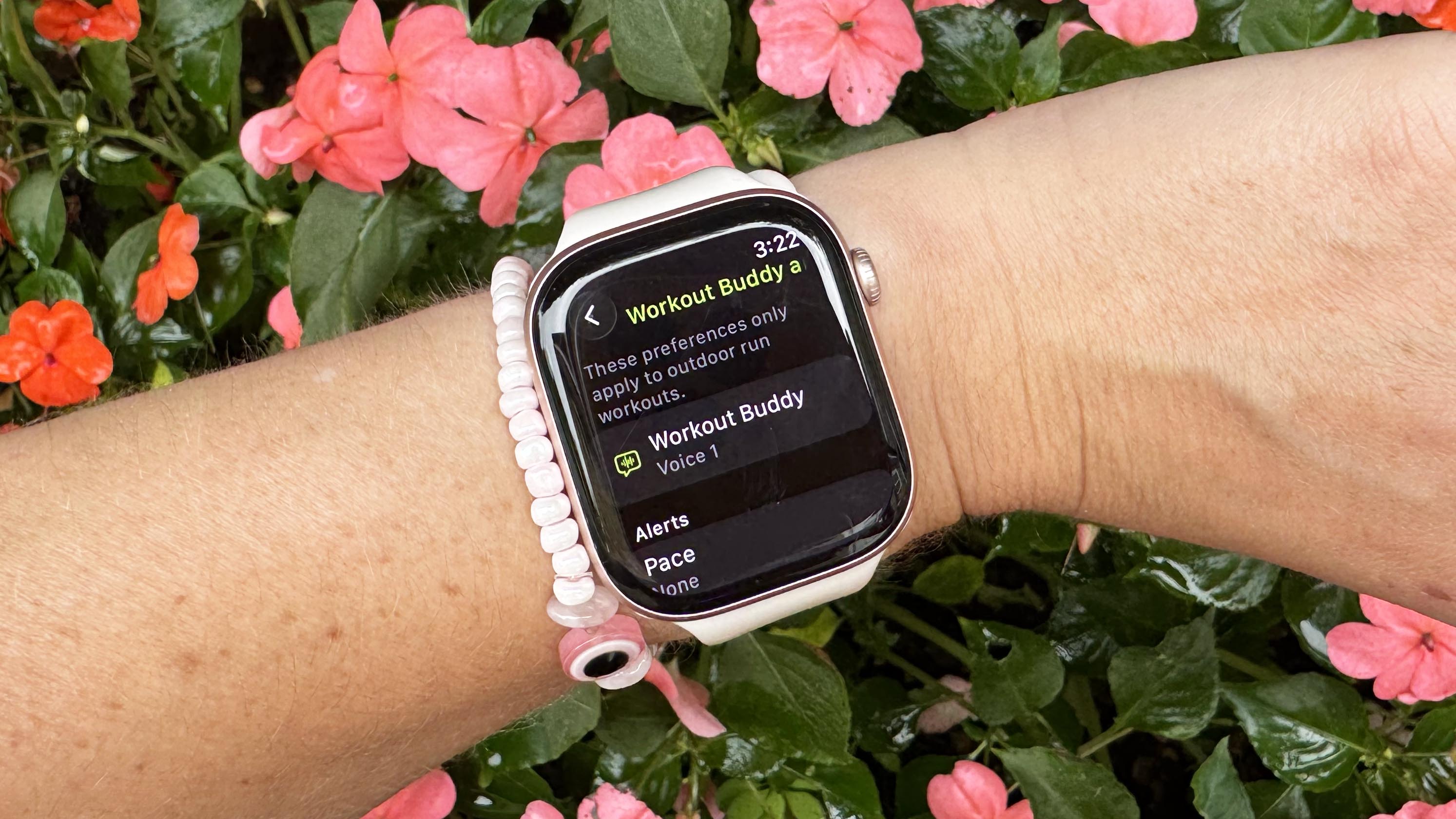I ran 15 miles with the Apple Watch's new Workout Buddy — here’s my verdict
I thought I’d hate it, but it’s not that simple

When Apple announced its Workout Buddy feature, an AI-powered assistant to get you through your workouts, I released an audible groan, knowing I’d have to write this article.
On paper, it’s the kind of thing I hate — an overly-enthusiastic robotic voice, regurgitating stats I’ve already seen on my running watch.
I’m the kind of person who loves to run alone — it’s my time to escape, to decompress, and to get my mind in order. I’ve completed five marathons, and trained for all of them on my own. I fully expected to hate Workout Buddy, but I diligently downloaded the watchOS 26 Beta onto my Apple Watch Series 10 (here’s how to upgrade your Apple Watch to watchOS 26 Beta), and ran for 15 miles. The results surprised me.
It doesn’t interrupt your workouts
To put my new Workout Buddy through its paces, I set out on several different runs over two days — an easy 7-mile run one day, followed by a 6-mile tempo session and a 2-mile recovery the next. The tempo session was built on my Apple Watch as a Custom Workout.
Each run, excluding the tempo session, started with the Workout Buddy’s “pep talk,” which went over how many miles I’d run this week or my current streak of closing my rings, along with phrases like “Great job starting your run!” and “You’re crushing it!” Then, each mile, Workout Buddy would tell me my average pace for the mile, my heart rate, and what I was listening to.
At the end of the run, it gave me a summary of my workout, again, excluding the tempo run. During the custom workout, Workout Buddy didn’t seem to work — instead, I had the normal reminders to change pace during the work and recovery phases of the workout. Perhaps it’s something I hadn’t toggled on in Settings, or perhaps that was Workout Buddy, but all of the “good job” messaging was gone.
Like all AI, it has its quirks
Apple isn’t the first brand to add AI to its fitness trackers — we’ve seen it from Whoop, Garmin, Oura, Strava, and Samsung. Yet like pretty much every other brand on the market, Apple’s AI isn’t foolproof. On one run, Workout Buddy told me how many minutes I’d run that year — sure, running something like 4,000 minutes is an achievement, but it’s not a milestone I’ve ever tracked before.
Get instant access to breaking news, the hottest reviews, great deals and helpful tips.
Another thing to note is that you have to have your iPhone with you to use Workout Buddy, and not all iPhones are compatible. Your iPhone has to have Apple Intelligence in able to use Workout Buddy, so you’ll need an iPhone 15 Pro/ iPhone 15 Pro Max, or iPhone 16.
To be really useful, it needs to do more
While I didn’t hate Workout Buddy as much as I was anticipating, like all of these AI fitness features, in order to be truly useful, it needs to do more.
Apple has erred on the side of caution with an overly positive tone, but what I want is my Workout Buddy to tell me that the last rep was slower, so I needed to dig in to finish the workout strong. Of course, Apple probably wouldn’t ever do this, as they wouldn’t want to risk people getting injured, but even if the messaging was “that last mile was slower, but this weeks training load is up 60%”, or “you’re slowing down but you’re going up-hill. Your grade-adjusted pace is as follows…” it would be more useful than regurgitating what’s on my wrist already.
It’s worth noting, this is a Beta version of watchOS 26, and often Apple will hold things back to coincide with the potential release of new watches this fall. What I’d hope to see is AI that gets smarter the more you run with it. If your Workout Buddy could remember your last run on a certain route, and tell you when hills were coming up, or how your current performance compared, that might be more helpful.
What’s more, if Apple, like most of the best Garmin watches have done for years, could consider your current week’s training load, and how well you’ve slept the night before, and suggest workouts for you, that could take a lot of the guesswork out of training, and enhance the tool. Plus, prevent you from overtraining and picking up an injury that might keep you from the start line.

Apple has always fallen behind its competitors in its lack of coaching, recovery, and training features, but Workout Buddy seems to be a hint of what’s to come — Apple using the expertise of its Fitness+ Coaches and blending this into the Workout app.
I don’t for a second believe Workout Buddy can replace the expertise of real-life coaches, but I’ve always performed best when I’ve had someone pushing me to work harder, not congratulating me on getting out the door. It's the reason some of Peloton's instructors have become household names — they don't just hold your hand, they push you to get fitter. Perhaps Apple could follow Oura’s lead and give users different AI personalities to subscribe to, so you can pick a coach that’s right for you.
I just hope when Workout Buddy rolls out this fall, its personality is a little punchier, because it has the potential to be a useful tool for runners.
Follow Tom's Guide on Google News to get our up-to-date news, how-tos, and reviews in your feeds. Make sure to click the Follow button.
More from Tom's Guide
- This new Apple Watch feature just solved my biggest problem with calls and notifications
- It's almost time for new Apple Watches — 5 upgrades I’m hoping for most
- I biked 13 miles with the Apple Watch Ultra 2 vs. Samsung Galaxy Watch Ultra — here’s the winner

Jane McGuire is Tom's Guide's Fitness editor, which means she looks after everything fitness related - from running gear to yoga mats. An avid runner, Jane has tested and reviewed fitness products for the past five years, so knows what to look for when finding a good running watch or a pair of shorts with pockets big enough for your smartphone. When she's not pounding the pavements, you'll find Jane striding round the Surrey Hills, taking far too many photos of her puppy.
You must confirm your public display name before commenting
Please logout and then login again, you will then be prompted to enter your display name.
